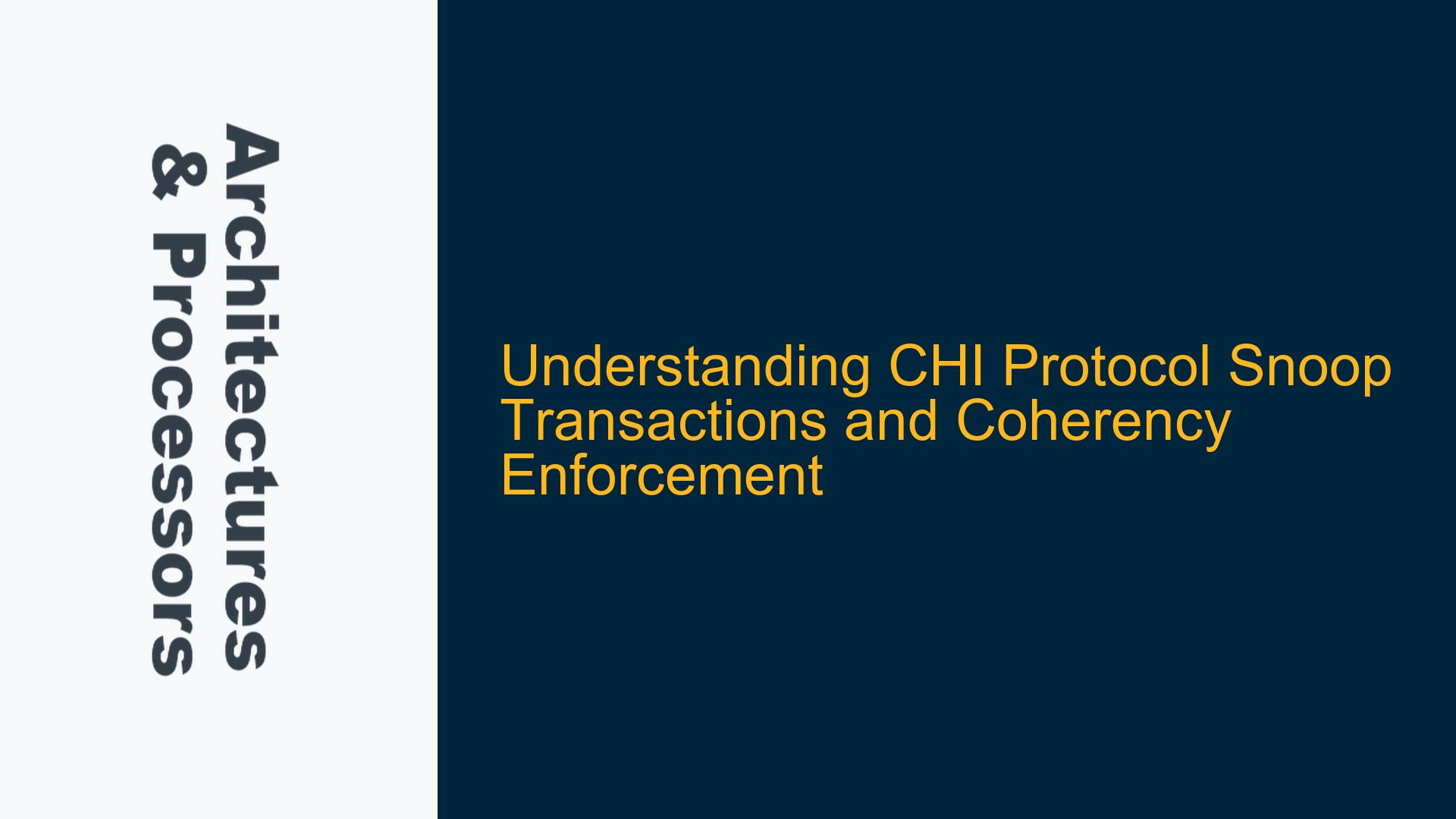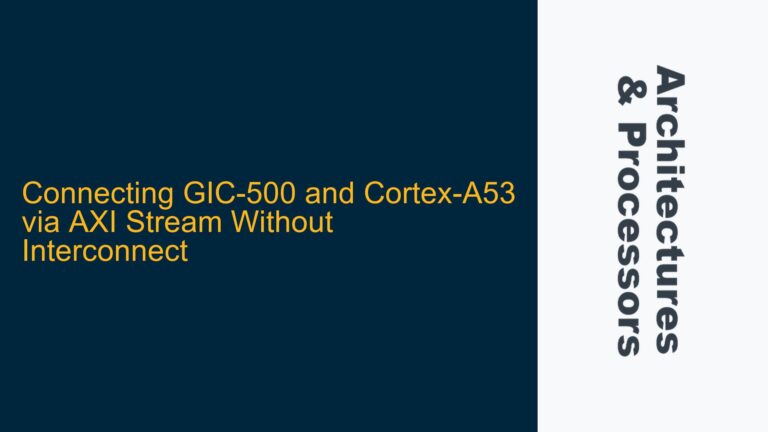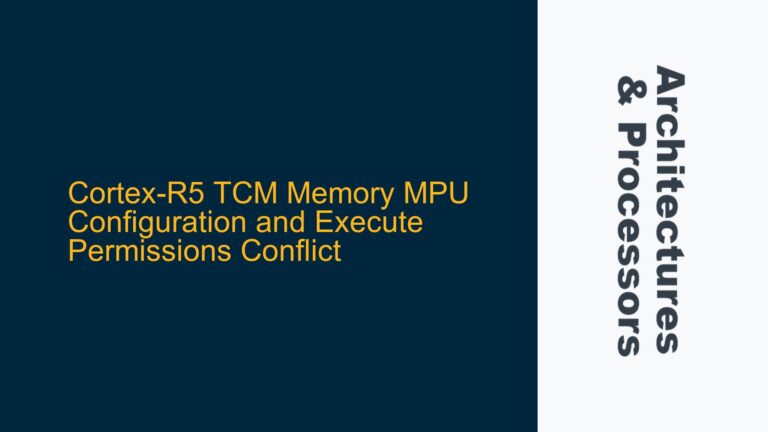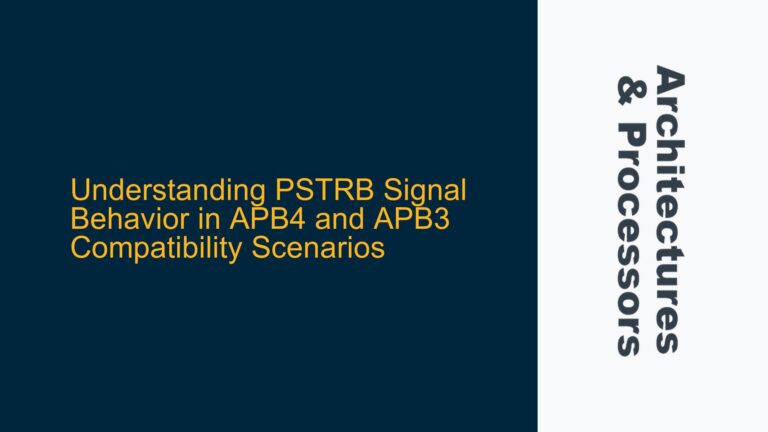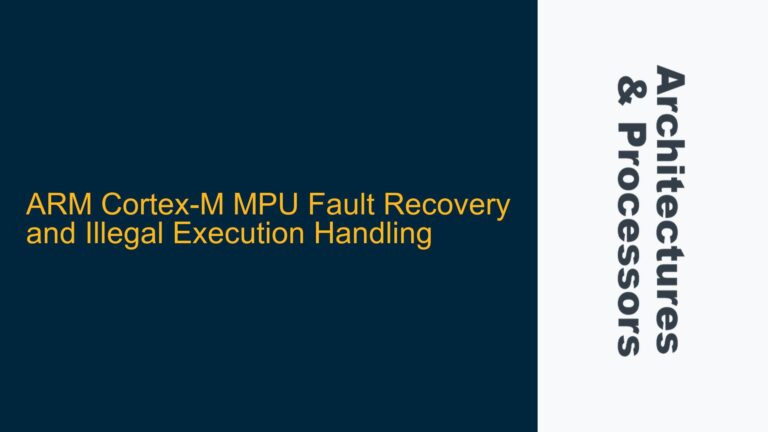ARM CHI Protocol Snoop Transactions and Their Role in Coherency
The ARM Coherent Hub Interface (CHI) protocol is a critical component in modern ARM-based SoCs, enabling efficient communication between various request nodes (RNs) and the interconnect. One of the key aspects of CHI is its handling of snoop transactions, which are essential for maintaining cache coherency across the system. Snoop transactions are initiated by the interconnect and sent to Fully Coherent Request Nodes (RN-Fs) to ensure that all caches in the system have a consistent view of memory.
In the CHI protocol, RN-Fs are nodes that contain coherent caches and are capable of accepting and responding to snoop transactions. These snoop transactions are used by the interconnect to request data from RN-Fs when another RN-F requires that data for a read operation. For example, if RN-F_A issues a read request for a specific memory location, and RN-F_B has a cached copy of that data, the interconnect will send a snoop transaction to RN-F_B to retrieve the data. RN-F_B must then respond to the snoop by providing the requested data or invalidating its cache line if necessary.
The interconnect is responsible for managing these snoop transactions, ensuring that they are sent to the appropriate RN-Fs. Only RN-Fs, which have hardware-coherent caches, should receive snoop transactions related to data coherency. Other types of request nodes, such as RN-Ds, do not have hardware-coherent caches and should not receive these snoops. However, RN-Ds can receive DVMs (Direct Virtual Memory) operations, which are used to maintain non-data related caches like TLBs, instruction caches, and branch predictors.
The snoop mechanism in CHI is crucial for maintaining cache coherency, as it ensures that all RN-Fs have a consistent view of memory. When an RN-F performs a store operation, it must first ensure that it has exclusive ownership of the cache line being modified. This is achieved by issuing a transaction that places the cache line in a Unique state. The interconnect then sends snoop transactions to other RN-Fs to invalidate their copies of the cache line, ensuring that no more than one copy of the data exists in the system at any given time.
Enforcing Single Copy of Data in CHI Coherency Protocol
The CHI protocol enforces a strict rule that no more than one copy of a cache line can exist in a Unique state when a store operation is performed. This rule is essential for maintaining data consistency across the system. When an RN-F wants to perform a store operation, it must first ensure that it has exclusive ownership of the cache line. This is done by issuing a transaction that places the cache line in a Unique state, such as a ReadUnique transaction.
The ReadUnique transaction guarantees that the cache line is in a Unique state before the store operation is performed. If the cache line is not already in a Unique state, the interconnect will send snoop transactions to other RN-Fs to invalidate their copies of the cache line. This ensures that no other RN-F has a valid copy of the cache line when the store operation is performed. Once the cache line is in a Unique state, the RN-F can safely perform the store operation, knowing that it has exclusive ownership of the data.
After the store operation is completed, other RN-Fs can obtain a new copy of the data for their own local caches. This allows multiple cached copies of the data to exist, but only after the store operation has been completed and the data has been updated. The CHI protocol ensures that all RN-Fs observe the correct data value at any given address location by enforcing this strict coherency rule.
The enforcement of a single copy of data during store operations is a fundamental aspect of the CHI protocol. It prevents data corruption and ensures that all RN-Fs have a consistent view of memory. This is particularly important in multi-core systems, where multiple RN-Fs may be accessing the same memory locations simultaneously. By enforcing this rule, the CHI protocol ensures that all RN-Fs see the correct data values, even in the presence of concurrent store operations.
Implementing Snoop Transactions and Coherency Enforcement in CHI
To implement snoop transactions and enforce coherency in the CHI protocol, several steps must be taken. First, the interconnect must be designed to manage snoop transactions effectively. This includes determining which RN-Fs should receive snoop transactions based on the memory addresses being accessed. The interconnect must also handle the responses from RN-Fs, ensuring that the correct data is returned to the requesting RN-F.
When an RN-F issues a ReadUnique transaction, the interconnect must send snoop transactions to all RN-Fs that may have a copy of the cache line. These snoop transactions request that the RN-Fs invalidate their copies of the cache line or return the data if it is still valid. The interconnect must then wait for responses from all RN-Fs before completing the ReadUnique transaction and allowing the store operation to proceed.
In addition to managing snoop transactions, the interconnect must also handle the state transitions of cache lines in RN-Fs. When a cache line is placed in a Unique state, the interconnect must ensure that all other RN-Fs have invalidated their copies of the cache line. This requires careful coordination between the interconnect and the RN-Fs, as well as efficient handling of snoop transactions to minimize latency.
To optimize the performance of snoop transactions and coherency enforcement, several techniques can be used. For example, the interconnect can use a directory-based coherency protocol to reduce the number of snoop transactions that need to be sent. In a directory-based protocol, the interconnect maintains a directory that tracks which RN-Fs have copies of each cache line. This allows the interconnect to send snoop transactions only to the RN-Fs that have a copy of the cache line, rather than broadcasting snoop transactions to all RN-Fs.
Another technique for optimizing coherency enforcement is to use speculative execution. In speculative execution, the RN-F can begin executing a store operation before the cache line is placed in a Unique state. If the cache line is already in a Unique state, the store operation can proceed without waiting for snoop transactions to complete. If the cache line is not in a Unique state, the RN-F must wait for the snoop transactions to complete before proceeding with the store operation. Speculative execution can reduce the latency of store operations, but it requires careful handling to ensure that data consistency is maintained.
In summary, implementing snoop transactions and coherency enforcement in the CHI protocol requires careful design of the interconnect and efficient handling of state transitions in RN-Fs. By using techniques such as directory-based coherency and speculative execution, the performance of snoop transactions and coherency enforcement can be optimized, ensuring that all RN-Fs have a consistent view of memory while minimizing latency.
